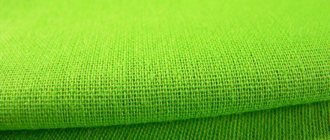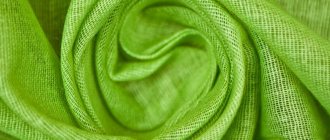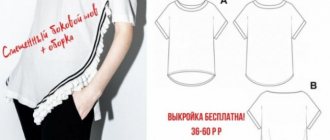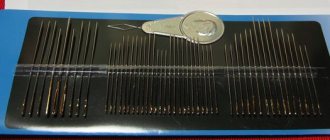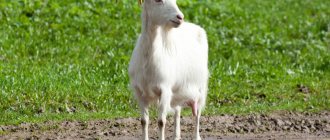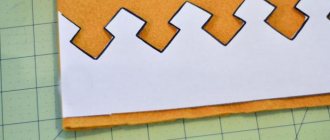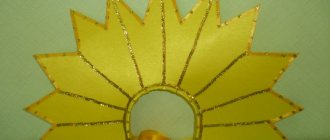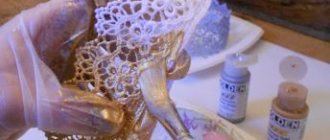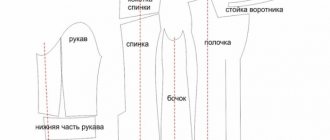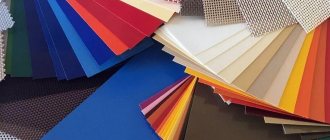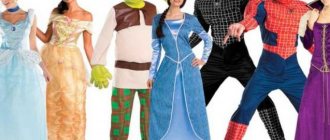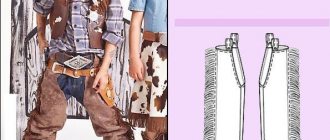Chechens are one of the peoples of the North Caucasus, who live not only in Chechnya, but also in Ingushetia, Georgia and Dagestan. Living and developing in close cooperation with its neighbors, Chechen culture acquired a certain universality - features characteristic of all Caucasian peoples. One of these features is respect for ancestors, which is why many elements of the national costume, as a reflection of centuries-old traditions, have been preserved to this day.
Local fabrics were used to make clothing, since Chechens have long been engaged in the production of cloth, dyeing, flax, canvas, and in the 16th century they learned to make silk.
A little history
For centuries, Chechens have been sheep farmers, so they are well versed in processing and spinning wool. It is not surprising that this material was used as the basis for the traditional costume. Fur and leather were also used. Since ancient times, Chechens have been able to make felt and cloth, from which craftsmen sewed elements for clothing.
As you know, Muslim and Christian religions closely coexist in the Caucasus. In addition to Orthodox churches and mosques, there is also a synagogue, which confirms the tolerance of the peoples living there.
Scientists have long noted that the costume of a particular nationality depends not only on geography and climate, but also on the faith and mentality of the people. All these nuances are reflected in the clothes. By the ornament you can determine the level of artistic development of people, and by the colors you can find out the moral values of the represented ethnic group. Suffice it to recall women's traditional attire. After all, this is a real example of chastity and restraint.
Peculiarities
The national costume of the Chechens has several types: women's, men's, wedding, combat, and formal. The children's clothes are almost the same, but with small nuances. So, boys did not carry a dagger until they were 14 years old. As soon as it appeared on the belt, it was believed that the child had become a youth. Let's take a closer look at the features of Chechen traditional clothing.
Colors and shades
The men's suit had predominantly dark colors, and the beshmet (undershirt) contrasted with the rest. The shades of women's outfits are more varied. However, bright dresses were usually worn by young girls and women; older Chechen women considered this indecent and wore suits of calm color. Traditionally, green, yellow, red and black colors were used for the dress.
Fabrics and cut
The materials used in men's clothing included wool, fur, and leather. Women's ones were made of brocade, satin, silk, and organza. The outfits of Chechen residents are quite closed. At the same time, they are comfortable and do not hinder movement.
Details of the Chechen outfit
In the traditional clothing of Chechens, both men and women, there was a minimum set of items sufficient for going out: an undershirt and pants; for women, a scarf was added to this set.
Dark colors predominated in the men's suit, but the undershirt (beshmet), as a rule, contrasted in color with the rest of the clothing. Women's outfits had a more varied range of colors, but only girls and women could afford bright dresses; older Chechen women considered such an outfit indecent for themselves and preferred calm colors.
Chechen men's suit
It consisted of two elements:
- The beshmet was a tight-fitting half-caftan that widened at the bottom, just above the knees, and was fastened to the waist with a knot-button.
- Tapered pants. To prevent movement from being constrained, they were cut from lightweight fabric.
Additionally, the costume included the following elements:
- Circassian coat - worn on top. The cut was similar to the beshmet, but it was fastened only at the waist. Made from the best cloth.
- A burka is a sleeveless cape with narrowed, solid shoulders, widening downward. This one was made from felt. It is interesting that the burka served not only as clothing, but also as a blanket for Circassian men.
Surprisingly, only craftswomen who were considered the best in this matter could make a cape.
Return to contents
Woman suit
The basis of a traditional outfit includes 4 elements of clothing:
- A tunic dress is long, made of light fabric with a shallow slit on the chest. There are always sleeves covering the hands and a bib (it is decorated with stones and embroidery). There is a stand-up collar that fastens with a small button.
- Wide trousers with a frill at the bottom.
- Shawl – with embroidery or plain.
- Leather or fabric belt.
The outfit was often accompanied by an outer dress made of satin, velvet or brocade. It was fastened only at the waist, had long sleeves and looked like a Circassian jacket.
Characteristic features of men's and women's suits
The national costume of a Chechen man consisted of 2 main items:
- beshmet - a semi-caftan slightly above the knees, widening at the bottom, precisely fitting the figure and fastened to the waist with knotted buttons;
- The pants had to be easily tucked into boots, so they were cut tapered at the bottom and made of light fabric so as not to hamper movement.
Features of a men's suit
The following items could complement the main costume:
Circassian - outerwear slightly knee-length; its cut resembled a beshmet and was fastened only at the belt. The Circassian coat, as a rule, was made from the best cloth. A distinctive detail of the dress were pockets for storing special tubes with charges for a gun - a gas cylinder. Gradually, gazyrs lost their practical purpose, but gazyrs were preserved in the national costume as a decorative element.
A burka is a sleeveless felt cape that flares downward and has narrow, hard shoulders, which served men as both clothing and a blanket.
Only women, recognized masters of their craft, were given the right to make a burqa.
Papakha is a cone-shaped hat made of sheepskin, long-haired or astrakhan fur. Hats made from Bukhara lamb skin were considered especially valuable, but only rich people could afford them.
It was forbidden to touch someone else's hat; it was considered an insult to the owner.
A leather belt was a mandatory element of clothing; its festive version was decorated with metal inserts and pendants. The necessary items for a hike were attached to the belt: flint, a stone for sharpening a dagger or knife, a box of weapon lubricant. But the main purpose of the belt is to mount a dagger or saber.
On their feet they wore boots made of soft leather, just below the knees; Rich people had chuvyaki - leather shoes without heels - and wore morocco leggings on their shins.
Woman suit
The basis of a woman’s costume consisted of 4 items:
- a long tunic dress made of light fabric with a small slit on the chest, with sleeves covering the hands, and a bib decorated with embroidery and stones; the stand-up collar must be fastened with a small button;
- wide-cut trousers, the bottom of which was gathered into a frill ( in a suit for special occasions, the bottom was trimmed with lace );
- a scarf, simple or decorated with embroidery; married women wore scarves over the chukta (or chokhta) - a cap that tightly clasped the forehead and completely hid the hair;
- girls and young women added a cloth or leather belt to their costume.
This outfit was complemented by an outer dress, which was made of velvet, brocade or satin. In cut it was similar to a Circassian jacket with elongated sleeves, which was fastened only at the waist. Great importance was attached to the decoration of the dress, especially embroidery: not only the ornament was important, but also the color of the thread. Traditionally, a range of colors was used: green, red, yellow and black.
Women's shoes were varied:
- leather slippers, which were worn both at home and when going out;
- shoes with heels on hard soles (without backs);
- morocco boots with heels;
- boots that were sewn from several pieces of leather exactly to fit the foot.
Clothes for celebrations
The festive costume was made of shiny bright fabric. On special occasions, a Circassian coat made of the highest quality cloth was worn over the beshmet. It had no collar and fastened only at the waist, emphasizing the slender figure of the owner. The sleeves of the clothes are long, below the level of the hands, so they were often curved.
On both sides of the Circassian's chest, gas cylinders were attached. Note: gas tins are small pockets in which special wooden tubes with charges for weapons were stored. Gradually they stopped using them for their intended purpose, but they kept the pockets as a tribute to tradition. The Circassian coat was never worn unbuttoned, usually with a narrow belt. There used to be weapons hanging on it.
Wedding outfit
The Chechen bride's dress could be of different shades, not necessarily white, as in many European countries. But during the Soviet period, it was the snow-white color scheme that was most often used - a sign of purity and purity.
Chechen couples did not mind dressing up on the most important day (even today) in a traditional outfit in which they performed a national dance. The formal dress consisted of two layers (like everyday ones) - a tunic and an outer dress. But on this day it must be made from the best fabrics - silk, organza, satin, etc. The bib of the outfit is especially richly decorated.
The outer dress was made of expensive silk or heavy satin. It had long sleeves (reached to the floor). Decorated with beaded braid, rhinestones and pearls. The veil, familiar to many peoples, was replaced with a silk scarf.
Did you know that in traditional weddings, the bride was given a lot of jewelry, which she showed off in a wedding dance? The main element of a girl’s jewelry is a silver belt. It was given by the groom before the ceremony.
Return to contents
Wedding clothes
The groom's wedding dress differed from his everyday dress only in more expensive fabrics, but the bride's outer dress had a fundamental difference: a slit in the front, thanks to which it looked like two petals.
The color of the fabric could be any, but such a dress was decorated with special luxury. The girl's head was covered with a traditional scarf or lace shawl. A mandatory element of a woman's wedding dress was a richly decorated belt with a silver buckle, which was presented to the bride as a wedding gift by the groom.
Accessories and shoes
An attribute of women's and men's costume is the belt. Some of them are real masterpieces. They were often decorated with buckles, pearls and precious stones.
Young girls wore scarves made of almost transparent light fabric, and older ladies wore a thick scarf. Since ancient times, it has been worn over the chukta (this is a small bag where hair is collected). Chechen beauties wore necklaces, large rings, bracelets, brooches and other jewelry (made of silver or bronze, but not gold).
Women's shoes were different:
- leather slippers;
- high heels with hard soles;
- boots - on the leg, consisted of several pieces of leather;
- saffiano heeled boots.
As for men's shoes, these are mainly boots slightly below the knees made of soft leather. In ancient times, rich people wore shoes without heels and wore morocco leggings on their shins.
Another must-have accessory in a man's wardrobe is a hat. This is a cone-shaped sheepskin hat. An amazing fact: you couldn’t touch someone else’s hat - it was considered an insult to the owner.
Fabrics
From antiquity to the beginning of the 20th century. (when factory fabrics began to replace handicraft ones) the Vainakhs made fabrics from woolen threads, and outerwear was made from sheepskin, goat, calf and horse skins. Chechen craftswomen made very high-quality cloth for clothing from lambs' wool, dyeing it with natural dyes of black, dark red, brown, gray and blue. The first two colors were used for festive men's clothing. Vainakh women embroidered felt wall “carpets” with great skill. From the 16th century Chechens began to produce silk fabrics.
Ingush man and girl in festive costumes
Modern models
Let's return to the present. It is worth noting that, unlike many other nationalities, Chechens honor traditions and actively observe them to this day. Young people often dress up in national costume only on holidays; the rest of the time they prefer modern fashion. But men do not refuse to wear hats even with a business suit.
And now older Chechens wear Circassian coats and beshmets. Women do not refuse long dresses and cover their heads.
Chechen designers, wanting to connect the past and present in culture, create clothes focusing on the features of national costumes. For example, fashion collections include Caucasian shirts with a stand-up collar and one button.
Accessories and jewelry are also in trend. These are pendants, shoes, belts, hats. Often wedding suits are adapted versions of national formal dresses of past centuries.
Modern Chechen costume
Over time, the Chechen national costume has hardly changed.
Shirts with a stand-up collar are still common in men's youth fashion. The papakha has also stood the test of time - it is worn by all generations of Chechen men. Folk traditions have been preserved to an even greater extent in women's dress. Girls try to follow modern fashion, but the maxi skirt, long sleeves and scarf in the clothes of young Chechen women are unchanged.
Which suitcase should I buy for one person traveling?
Which is better: bamboo or cotton socks?
